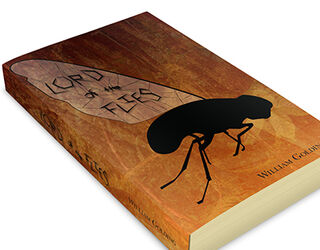Environment
Lord of the Flies: A Harmful Distortion of Children’s Nature
Sometimes a fiction is repeated so often that people believe it’s true.
Posted December 23, 2020 Reviewed by Ekua Hagan

“Well, what about Lord of the Flies?” How often I have heard someone say that after I’ve talked about the value of children’s independent play, away from adults, or about a democratic school where children of a wide range of ages interact without adult supervision. “Lord of the Flies” is the shorthand that people use to express the belief that children are incapable of self-discipline and will eventually run amok and attack one another if not supervised by adults. My first response, when I hear this expression, has always been, “Well, you know, Lord of the Flies is a work of fiction.”
William Golding’s novel, Lord of the Flies, as you probably know, is about a group of British schoolboys who were stranded on a deserted island somewhere in the Pacific. At first, they cooperated and worked out rational survival strategies, but, over time, the worst instincts of the least disciplined of them took over and they broke into warring factions. By the time a rescue ship arrived, three of the boys were dead and the island was in flames. Golding saw it as a story about human nature, not just children’s nature, but because the characters are children, it is passed along as a lesson about children’s nature, especially boys’ nature.
In the real world, children rarely, if ever, act like the fictitious children of Lord of the Flies. When children become brutal, there are usually adults leading or provoking the brutality. When real children are abandoned and realize their lives are in danger, their survival instincts kick in and lead them to cooperate even more than they normally do. They know, deep in their DNA, that cooperation is their only chance of saving themselves.
Think, for example, of the Lost Boys of Sudan—the thousands of orphaned boys who, in groups of various sizes, escaped the genocide in their homeland and trekked, in some cases thousands of miles, toward refugee camps, helping one another along the way. Generally, the older boys were the leaders in any given group, but in some groups, those older boys were as young as 10 to 12 years old.
A true life example of boys stranded on a deserted island
The Dutch historian and author Rutger Bregman, not long ago, unearthed a nearly lost true story of boys who actually were stranded on an uninhabited island, much like the island of Golding’s fantasy, and he wrote about it in his wonderful new book Humankind.
The boys were students at a strict Catholic boarding school, in the Polynesian kingdom of Tonga, who, sick of school, decided to “borrow” (without permission) a fishing ship and escape to Fiji, about 500 miles away. But they didn’t know much about sailing, and a storm came up and ruined the ship. After eight days of drifting, they came to a deserted Island. The boys were on the island for 15 months, beginning in June of 1965, until they saw and hailed a passing ship and were rescued. Bregman managed to locate the ship captain and one of the boys—who were by then old men and were still close friends to one another—and learned the story.
The boys did quarrel, but they developed ways of resolving their quarrels peacefully. One of them managed to create a fire by rubbing sticks together, and they carefully kept the fire going the whole time they were there. They figured out what they could eat. They created a garden. They kept regular watch to hail any ship that might pass. They made a sort of guitar using driftwood, a coconut shell, and steel wires salvaged from their wrecked boat and played it to lift their spirits. One of the boys fell and broke a leg, but the others managed to set it and all of them took care of that boy as he healed. They survived a severe summer drought by taking great care of what water they could find.
When they were finally rescued, the doctor who examined them was amazed at their excellent health and at how well the boy’s broken leg had been set and had healed. The conditions of this real-life story were very much like those of Golding’s fiction, but the outcome was entirely different.
The attraction of schools to Golding's book
A decade ago, Time Magazine (2010) included Lord of the Flies in a review of “The Top 10 Books You Were Forced to Read in School.” Yes, it’s right up there with Macbeth and The Scarlet Letter. I think it’s no surprise that this book is so often assigned in school. It’s a morality tale that fits with a fundamental assumption behind compulsory schooling—the assumption that kids just make a mess of things if left to their own devices.
As I noted in a previous post (here), schools, as we know them today, have their origin in the schools of the Protestant Reformation, which were premised on the idea that human beings are innately sinful and need discipline to drive the sinfulness out of them. Our secular schools today don’t generally talk about sin, but the premise remains that obedience to authority, not self-initiative, is the route to improvement.
It’s interesting to note that Golding himself was a schoolteacher, up until his earnings from Lord of the Flies allowed him to leave that job for full-time writing (Carey, 2009). I can’t help but suspect that classroom teaching played a role in the development of his book.
Keeping control of the classroom is the number one task of the teacher. Teachers who fail at that will be fired; teachers who succeed at it will be kept on, almost no matter how terrible they are at actually helping kids learn. Teachers have the constant fear that if their authority lapses, the class will erupt in chaos. They may be right about that, but that’s the result of the unnatural, repressive classroom situation, not evil human nature. In Golding’s Lord of the Flies, children released from the classroom with no adult control start killing one another, literally. It’s a teacher’s worst nightmare.
As Golding’s biographer (Carey, 2009) has pointed out, Golding himself had a very dark side, with which he struggled throughout his life. In a memoir that he never published, Golding admitted to attempting to rape a 15-year-old girl when he, at age 18, was home from college. He drank heavily throughout his adult life, sometimes behaved violently when drunk, was often depressed and had a turbulent relationship with his own children and wife. He struggled consciously with these aspects of himself, and his biographers attribute his book about the darkness of human nature in part to that struggle.
Well, that’s fine, but let’s not jump from Golding’s struggle with his inner demons to a conclusion that people in general, or boys in particular, are innately vicious and require authoritarian control to keep them in line. Authoritarian control much more often incites violence than prevents it.
And now, what do you think about this? … This blog is, in part, a forum for discussion. Your questions, thoughts, stories, and opinions are treated respectfully by me and other readers, regardless of the degree to which we agree or disagree. Psychology Today no longer accepts comments on this site, but you can comment by going to my Facebook profile, where you will see a link to this post. If you don't see this post at the top of my timeline, just put the title of the post into the search option (click on the three-dot icon at the top of the timeline and then on the search icon that appears in the menu) and it will come up. By following me on Facebook you can comment on all of my posts and see others' comments. The discussion is often very interesting.
References
Bregman, R. (2020). Humankind. English translation.
Carey, J. (2009). William Golding: The man who wrote Lord of the Flies.
Time Magazine (2010, July 9). "Top 10 books you were forced to read in school."




